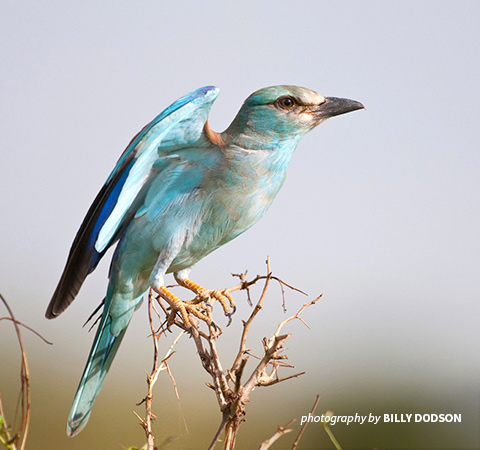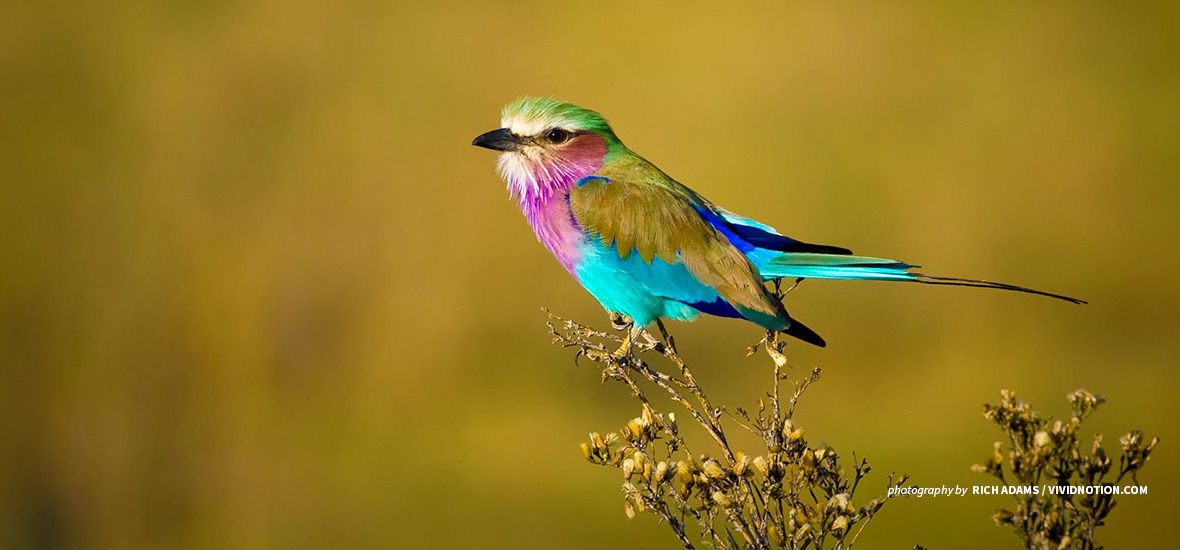Why Africa's natural ecosystems are essential for migratory birds

The crowned Eurasian hoopoe is a migratory bird found across Europe, Asia, and Africa
Twice a year, at least 4,000 species of migratory birds worldwide will depart from their homes and move to a completely different geography, some traveling thousands of kilometers, to pursue optimal conditions for eating, breeding, and raising their young.
Throughout history, various theories for the seasonal disappearance of the birds abounded. Aristotle posited that storks, swallows, and kites hibernated each winter, and that some species metamorphosed into others – redstarts transforming into robins for winter. The Cree Indians of North America thought small birds traveled on the backs of larger ones. The truth, at times, seems even more fantastical.
Studies have revealed some incredible avian journeys. The red knot travels up to 16,000 kilometers twice a year, breeding in Siberia and wintering on the western coasts of Africa. The bar-headed goose has been observed traveling over the Himalayan mountains, reaching altitudes above 7,000 meters. The bar-tailed godwit flies over 11,000 kilometers non-stop across the Pacific Ocean from Alaska to New Zealand in just over eight days. Though it weighs just about 10 grams, the willow warbler has the longest migration of any songbird, traveling 11,300 kilometers between northeast Siberia and Southern Africa.
While we still do not know many of the precise physiological mechanisms responsible for their exquisite sense of direction, we have learned a great deal. We know migratory birds are capable of orienting by sight and smell, the sun and stars, polarized light, and the earth’s magnetic field (though it is not certain which birds use which combinations of mechanisms). We know most birds migrate at night because the weather tends to be calmer and fewer predators are out.
Considering the size of many of these birds, the distance they are traveling, and all the obstacles they face — weather, predators, infrastructure designed against them — their biannual flight is all the more unexpected and amazing. Each year they become a critical part of each landscape they occupy, many birds able to return to the exact same locations.
What risks do migratory birds face in flight?
But, just as the flights of migratory birds are global, so too are the threats endangering their flights. Habitat destruction is devastating for all species, but especially migratory birds, where losing even one stopover spot interrupts and threatens to derail the entire journey. These birds rely on the same tracks year after year as they migrate, and depend on their continued existence. Artificial light, which distracts and disorients migrating birds, is increasing globally by at least two percent each year. The human-built environment, particularly windows and energy infrastructure, can cause deadly collisions for birds. Meanwhile, rising temperatures caused by climate change can drive an ecological mismatch where migratory birds arrive from their wintering grounds earlier than they used to, before their food sources have surfaced in abundance.
There are many reasons to conserve migratory birds and their iconic flights. They present both cultural value and ecological import. They are beautiful in appearance, emblematic of their landscapes, and even helpful in keeping insect populations under control.
Protecting Africa’s avian communities
An estimated 2.1 billion passerine and near-passerine birds migrate between Europe and Africa twice each year (passerines are songbirds and near-passerines are those believed to be most closely related to them). Three-hundred-and-thirty-one bird species migrate using the East Asia-East Africa flyway, following the broad path of many migratory birds between North Asia and East to Southern Africa. Among other birds, these species include the Eurasian wryneck which can twist its head almost a full 180 degrees, the European roller whose bright sky blue wings contrast its black wingtips, and the fancifully crowned Eurasian hoopoe that wears an off-shouldered coat striped black and white.

The European roller is one of 331 bird species that migrate from North Asia to Southern Africa
Conserving habitats across national boundaries ensures the birds have the space they rely on during each trip south. One of these integral sites for migratory birds is the AWF Tsavo-Mkomazi landscape that falls on both sides of the Kenya-Tanzania border. This landscape hosts large numbers of north Eurasian migratory birds who stop briefly or over winter at the site. Visitors and seasonal residents include the lesser kestrel, corn crake, pallid harrier, and the endangered Barsa reed-warbler.
To conserve these habitats, AWF works with communities surrounding valuable landscapes like Tsavo-Mkomazi to develop land-use plans. Seven awareness meetings were held between October and November 2021 for three communities adjacent to Mkomazi. The meetings educated the communities on the importance of land-use plans and then collaboratively developed a plan that could work for everyone. It was agreed to plan 30 percent of the land for conservation to support wildlife and grazing through the meetings. The rest was planned for agriculture, residences, and necessary services.
Tsavo-Mkomazi is not AWF’s only site of value to birds. Several AWF priority landscapes were identified by BirdLife International and the International Union for the Conservation of Nature as Important Bird and Biodiversity Areas, including Faro National Park, Campo Ma’an complex, and Dja Faunal Reserve in Cameroon; Virunga National Park, the Democratic Republic of the Congo; Simien Mountains National Park, Ethiopia; Kidepo Valley National Park, Uganda; Volcanoes National Park, Rwanda; and the Middle Zambezi Valley, Zimbabwe. AWF’s work in preserving these natural landscapes assists all birds, migratory or yearlong residents, that reside in these areas.

Lilac-breasted rollers are colorful birds widespread across sub-Saharan Africa
The marvel of migratory birds
World Migratory Bird Day falls twice each year, on the second Saturday in May and October. Bird-lovers around the world celebrate the biannual flights of migratory birds and raise awareness of the continued and heightening need for their conservation. Recognizing the occasion as an opportunity and seeing the need to drive compassion and change on the issue, AWF has joined the African CSOs Biodiversity Alliance for its World Migratory Bird Day webinar this year and last. Last year AWF’s Senior Manager, Youth Leadership Program, Simangele Msweli moderated the webinar. More than 70 participants joined to learn about the biannual avian treks and the threats that imperil their journey.
Last year’s webinar spread awareness on the issues that migratory birds confront and shared the joy of these birds and their fantastic journeys. Panelists spurred engaging discussions on various issues, such as the impact of energy infrastructure on birds. Participants were equipped with simple everyday solutions they can take on to help these birds: participating in local bird surveys, turning out lights at night, keeping cats indoors, reducing their ecological footprint, and just simply caring about birds and sharing information about the challenges they face.
We may not share birds' extraordinary innate navigational capabilities, but we will use what we do know to stay on track, keeping migratory birds airborne and soaring.
> Learn more about the endangered wildlife species of Africa that AWF helps protect